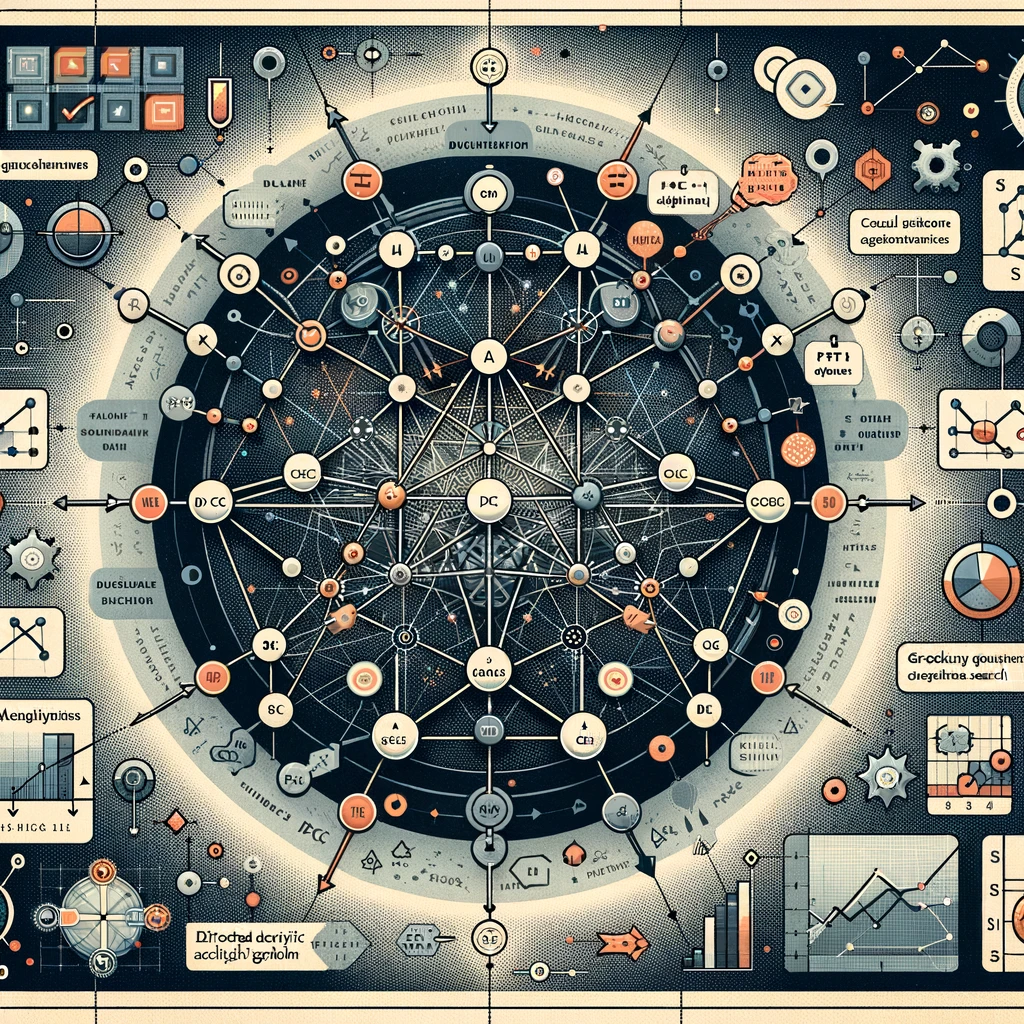In the quest to understand the intricate dance of cause and effect, few works are as enlightening as Judea Pearl’s “The Book of Why.” This seminal book delves into the heart of causal reasoning, providing a comprehensive framework to move beyond mere correlations and uncover the true drivers behind observed phenomena. At the core of this exploration is The Ladder of Causality, a model that elucidates different levels of causal understanding. In this post, we’ll explore this ladder, discuss the principles of causal inference and discovery, and touch upon the complexities of causality in time series data.
The Ladder of Causality: Climbing Towards Understanding
Association: Recognizing Patterns
At the base of the ladder is association. This level involves identifying and understanding correlations between different variables. For instance, we might observe that people who exercise regularly tend to have lower blood pressure. However, as we discussed in our previous post about ice cream sales and shark attacks, it’s crucial not to mistake association for causation. Association is about recognizing patterns and relationships, but it doesn’t explain why these connections exist. This foundational level is where many traditional statistical methods and machine learning models operate, excelling in pattern recognition but stopping short of true causal understanding.
Intervention: Manipulating Variables
The second rung of the ladder is intervention, where we delve into understanding how manipulating one variable affects another. This involves answering “what if” questions. For example, what happens to blood pressure if we start exercising? This requires more than just observing data; it necessitates actively changing variables and observing the outcomes. Randomized controlled trials are a classic example of interventions. By randomly assigning subjects to different treatment groups, researchers can determine the causal effects of those treatments. This level of understanding is crucial for making informed decisions and policies, as it allows us to predict the consequences of our actions.
Counterfactuals: Imagining Alternate Realities
At the top of the ladder are counterfactuals. This level deals with hypothetical scenarios and is the most complex form of causal reasoning. Counterfactuals answer questions like, “What would have happened if a different action had been taken?” For instance, if a patient had not exercised, would their blood pressure have remained high? This requires not only understanding the causal relationships but also being able to reason about alternate realities. Counterfactuals are essential for deep causal analysis because they allow us to compare actual outcomes with potential outcomes under different circumstances. This level of reasoning is vital for understanding cause and effect in a nuanced way, forming the backbone of advanced fields such as policy evaluation, legal reasoning, and personalized medicine.
Causal Discovery: Uncovering Hidden Relationships
In the realm of causal discovery, the principles of The Ladder of Causality are employed to uncover the underlying causal structures within complex datasets. Causal discovery algorithms and techniques use the hierarchical levels of association, intervention, and counterfactuals to identify and validate causal relationships between variables. By starting with observed associations, researchers can hypothesize potential causal links. Through interventions, they can test these hypotheses by actively manipulating variables and observing the outcomes. Finally, counterfactual reasoning allows for the exploration of alternative scenarios, providing a deeper understanding of the causal mechanisms at play.
To rigorously validate causal discoveries, graph theoretical techniques play a crucial role. These techniques involve the use of Directed Acyclic Graphs (DAGs) to represent causal relationships. In a DAG, nodes represent variables, and directed edges represent causal influences. This graphical representation helps in visualizing and reasoning about the causal structure of the data. Algorithms such as the PC algorithm, Fast Causal Inference (FCI), and Greedy Equivalence Search (GES) are commonly used to infer causal graphs from data. These methods leverage conditional independence tests to determine the presence or absence of edges, helping to uncover the underlying causal structure. By combining these graph theoretical approaches with interventions and counterfactual reasoning, researchers can achieve a more robust and comprehensive understanding of causality within complex systems.

The Complexity of Causality in Time Series Data
Applying causal discovery to time series data presents unique challenges due to the inherent complexity of temporal relationships. The importance of this approach lies in its ability to unravel how variables influence each other over time, offering insights into dynamic systems such as economic markets, weather patterns, and biological processes. The complexity arises from the need to account for time lags, feedback loops, and potential confounding factors that can obscure true causal relationships. Despite these challenges, the opportunities are immense. By applying causal discovery techniques to time series data, researchers can predict future trends, identify critical intervention points, and understand the evolution of systems in a way that static data analysis cannot. This enables more accurate forecasting, better decision-making, and the ability to simulate and evaluate the impact of potential changes over time. Given the intricate nature of this topic, it warrants its own dedicated discussion, which we will explore in a future post.
Conclusion
Understanding causality is crucial for making sense of the world and making informed decisions. Judea Pearl’s Ladder of Causality provides a structured framework for climbing from simple associations to complex counterfactual reasoning. By leveraging causal discovery techniques, including graph theoretical methods, we can uncover the true drivers behind observed phenomena, enabling us to predict, intervene, and imagine alternate realities with greater accuracy. While the complexity of causal discovery in time series data presents challenges, the potential rewards make it a vital area of study. Stay tuned for our upcoming post where we will delve deeper into the nuances of causality in time series data.




Pingback: Because Quantum is Cool! - The AI Psychiatrist